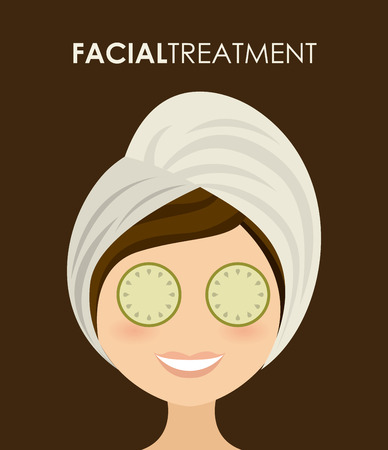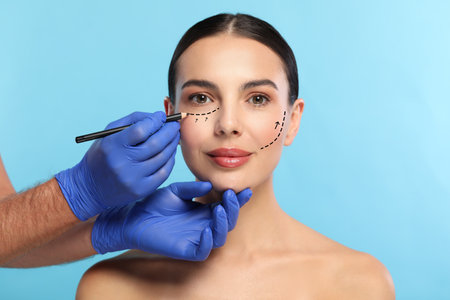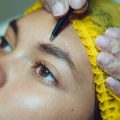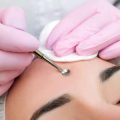1. Introduction to Non-Surgical Skin Tightening
In recent years, non-surgical skin tightening treatments have gained remarkable traction across the UK, reflecting a broader shift towards minimally invasive cosmetic procedures. Many individuals are now seeking effective ways to address sagging skin and early signs of ageing without the downtime or risks associated with traditional surgery. Clinics throughout Britain offer a variety of advanced techniques, including radiofrequency (RF), ultrasound-based therapies, laser treatments, and microneedling with energy devices. Each option promises firmer, more youthful-looking skin while allowing patients to maintain their busy schedules—a crucial factor in our fast-paced lifestyles. The popularity of these treatments is also driven by evolving technology, greater accessibility, and a growing emphasis on natural-looking results. As demand continues to rise, understanding how these non-surgical options compare has never been more relevant for those considering aesthetic enhancement within the UK context.
2. Understanding Radiofrequency Treatments
Radiofrequency (RF) technology has established itself as a cornerstone in the realm of non-surgical skin tightening, particularly within British clinics. This method employs electromagnetic waves to generate heat within the deeper layers of the skin, stimulating collagen and elastin production without damaging the surface. The process leverages the body’s natural healing response, resulting in firmer, more youthful-looking skin over time.
How Does RF Technology Work?
RF treatments deliver controlled energy into the dermis, where it gently heats tissues to temperatures typically between 38°C and 42°C. This thermal effect causes immediate contraction of collagen fibres and kickstarts new collagen synthesis over subsequent weeks. Unlike laser-based therapies, RF targets water molecules and is not dependent on skin colour, making it suitable for a broad range of skin types commonly seen in the UK.
Typical Procedures in British Clinics
A standard RF session in a British aesthetic clinic usually involves the following steps:
| Step | Description |
|---|---|
| Consultation | Assessment of patient’s suitability and expectations; medical history review |
| Preparation | Cleansing of target area; application of conductive gel for optimal energy transfer |
| Treatment | Application of handheld RF device; gradual heating and monitoring of skin temperature |
| Post-care | Advice on aftercare; scheduling follow-up sessions if required |
Prevalence in British Aesthetic Practices
RF treatments have become widely adopted across the UK, from high-end London clinics to regional skincare centres. Their popularity stems from minimal downtime, versatility across different age groups, and consistent results. Many practitioners favour RF as a first-line option before considering more invasive interventions, reflecting its strong reputation for both safety and efficacy within British aesthetics.

3. Exploring Other Non-Surgical Skin Tightening Methods
When it comes to non-surgical skin tightening, radiofrequency is certainly a leading technology, but it’s far from the only option available to those seeking firmer, more youthful-looking skin. In this section, we’ll delve into alternative modalities such as ultrasound, laser therapies, and High-Intensity Focused Ultrasound (HIFU), all of which are gaining traction across the UK. Understanding these options is crucial for anyone considering aesthetic treatments without the commitment or downtime associated with surgery.
Ultrasound-Based Treatments
Ultrasound skin tightening works by directing focused ultrasound energy deep beneath the skin’s surface to stimulate collagen production and achieve gradual lifting and firming. One of the most recognised brands in Britain is Ultherapy, often favoured for its precision and relatively minimal discomfort. Clients appreciate that results develop naturally over two to three months, making it a discreet choice for those who prefer subtle enhancements.
Laser Skin Tightening
Laser therapies utilise targeted light energy to heat deeper layers of the dermis while leaving the surface largely unaffected. This encourages collagen remodelling and can also address concerns like pigmentation and fine lines. Fractional laser systems such as Fraxel are particularly popular in London clinics due to their multi-functional benefits and relatively short recovery time. However, it’s important to note that laser treatments may not be suitable for all skin types, especially those with darker complexions, so professional consultation is essential.
High-Intensity Focused Ultrasound (HIFU)
HIFU has become a buzzword in UK aesthetics, offering a non-invasive solution that rivals surgical facelifts in some respects. By delivering precise ultrasound energy at specific depths, HIFU targets both superficial and foundational skin layers for comprehensive tightening effects. It’s most commonly sought after for jawline definition and brow lifting, with many British clients appreciating its single-session convenience and long-lasting outcomes.
Popular Choices Among UK Clients
The British market tends to favour treatments that balance efficacy with minimal disruption to daily life. Ultrasound-based methods like Ultherapy are well-regarded for subtlety and safety; lasers attract those looking for additional rejuvenation benefits; while HIFU stands out among younger demographics seeking preventative measures rather than corrective ones. Ultimately, choosing the right approach depends on individual needs, lifestyle considerations, and professional guidance from a qualified practitioner.
4. Efficacy and Results: What to Expect
When considering radiofrequency (RF) versus other non-surgical skin tightening treatments, efficacy and the nature of results are crucial factors for patients in the UK. Below is a comparative analysis focusing on clinical outcomes, longevity of results, and visible improvements based on both published studies and anecdotal feedback from British patients.
Comparative Overview of Clinical Outcomes
| Treatment | Mechanism | Average Sessions Needed | Typical Recovery Time |
|---|---|---|---|
| Radiofrequency (RF) | Heats deep dermal layers to stimulate collagen | 3-6 sessions | No downtime; mild redness may occur |
| Ultrasound (e.g., Ultherapy) | Uses focused ultrasound energy to lift tissue | 1-2 sessions | Mild swelling or tingling; back to normal within hours |
| Laser-Based Treatments | Delivers thermal energy via light wavelengths | 3-5 sessions | Possible redness, sensitivity for several days |
| Microneedling with RF | Tiny needles plus RF for deeper collagen induction | 2-4 sessions | Slight swelling/redness up to 48 hours |
Longevity of Results: How Long Do Improvements Last?
The durability of results is often a deciding factor. Generally, RF treatments provide noticeable tightening that can last up to 12–18 months, depending on age and lifestyle. Ultrasound-based methods are reported by UK clinics to maintain lifting effects for around 12 months, while laser treatments typically require top-ups every 6–12 months. Microneedling with RF offers improvements for about a year, though maintenance varies per patient.
Visible Improvements: Patient Perspectives from the UK
British patients frequently report gradual yet natural enhancements following RF procedures—firmer jawlines and more refined skin texture are common highlights. In contrast, ultrasound treatments tend to deliver more pronounced lifting effects with fewer sessions but can sometimes be uncomfortable during application. Lasers remain popular for those seeking combined tightening and pigmentation correction but may entail brief downtime. Many in the UK value RF for its subtlety and minimal disruption to daily life, aligning well with cultural preferences for understated cosmetic enhancement.
Efficacy Comparison Table: Patient-Reported Outcomes in the UK
| Treatment Type | Main Benefits (UK Patients) | Satisfaction Rate* | Preferred For… |
|---|---|---|---|
| RF Skin Tightening | Smoother texture, subtle lift, natural look | 75–80% | Mild-to-moderate laxity, facial rejuvenation without downtime |
| Ultrasound Lifting (Ultherapy) | Dramatic lift, especially around jaw & brow lines | 80–85% | Noticeable sagging, single-session results seekers |
| Laser Tightening (Non-Ablative) | Tightening plus improved tone/texture | 70–75% | Dullness, early signs of ageing, multi-benefit seekers |
| Microneedling + RF | Pore refinement, tighter skin, scar improvement | 78–82% | Younger clients, acne scars, combination concerns |
*Satisfaction rates are approximate based on UK clinic surveys and patient testimonials as of 2023.
This comparative evidence suggests that while all options offer tangible improvements, the choice hinges on individual priorities—whether immediate lift, cumulative subtlety, or additional benefits like pigmentation correction are most important. The British approach often favours long-term reliability and minimal interruption to daily routines—a niche where RF consistently performs well.
5. Safety Profile and Side Effects
Overview of Safety Considerations
When evaluating radiofrequency (RF) skin tightening versus other non-surgical treatments, such as ultrasound-based therapies and laser procedures, it is vital to consider their respective safety profiles. Across the UK, patient safety is prioritised, with NHS guidelines emphasising the importance of regulated clinics and trained practitioners for all cosmetic procedures.
Common Side Effects by Treatment Type
Radiofrequency (RF) Treatments
RF skin tightening is generally considered low-risk when performed by qualified professionals. The most frequently reported side effects include mild redness, swelling, or a warm sensation in the treated area, which usually resolves within a few hours. Rarely, patients may experience temporary bruising or minor blistering. According to NHS guidance, severe complications are uncommon but can occur if devices are misused.
Ultrasound-Based Treatments
High-Intensity Focused Ultrasound (HIFU) shares a similar safety profile with RF. Typical side effects include slight tingling, redness, or minor swelling immediately post-procedure. In rare instances, there may be numbness or bruising lasting several days. The NHS recommends choosing only practitioners registered with recognised professional bodies to minimise risks.
Laser Skin Tightening
Laser treatments can produce more pronounced side effects compared to RF and ultrasound. Temporary redness and swelling are common; however, there is an increased risk of pigmentation changes—especially for those with darker skin types—alongside possible blistering and scarring if aftercare advice is not followed closely.
Downtime and Recovery: A Comparative Look
One of the significant advantages of non-surgical skin tightening methods is minimal downtime. RF and ultrasound treatments typically allow patients to return to daily activities almost immediately, with only transient after-effects. Laser procedures might necessitate slightly longer recovery periods due to potential sensitivity and peeling post-treatment.
NHS Recommendations and UK-Specific Guidance
The NHS strongly encourages individuals to verify the credentials of providers and ensure that any device-based treatment is carried out in a clinical environment adhering to Care Quality Commission (CQC) standards. Patients are also advised to have realistic expectations about outcomes and to seek medical attention if they notice persistent pain or signs of infection following any procedure.
Summary Table: Safety Comparison
Treatment Type: Radiofrequency | Common Side Effects: Redness, warmth | Downtime: Minimal
Treatment Type: Ultrasound | Common Side Effects: Tingling, mild swelling | Downtime: Minimal
Treatment Type: Laser | Common Side Effects: Redness, pigment changes | Downtime: May require short rest period
In summary, while all non-surgical skin tightening options available in the UK present relatively low risks when performed properly, radiofrequency stands out for its excellent safety record and negligible downtime. However, patient diligence in selecting certified practitioners—as per NHS recommendations—remains the cornerstone of a safe treatment experience.
6. Cost, Accessibility, and Patient Suitability
When weighing up radiofrequency (RF) against other non-surgical skin tightening treatments, it’s essential to consider not only the effectiveness but also the practicalities of cost, availability, and suitability for British patients.
Treatment Costs: A Comparative Overview
In the UK, RF treatments tend to be moderately priced compared to more advanced options like ultrasound-based therapies or laser devices. On average, an RF session in a private clinic might range from £150 to £400 per area, depending on location and provider expertise. Conversely, procedures such as HIFU (High-Intensity Focused Ultrasound) or laser skin tightening can command higher fees—sometimes exceeding £600 per session. It’s worth noting that multiple sessions are often required for optimal results with all modalities, so prospective patients should factor in cumulative costs.
Availability: Private Clinics vs. NHS Settings
Most non-surgical skin tightening treatments—including RF, ultrasound, and laser—are considered cosmetic and are therefore rarely available on the NHS. British patients typically access these procedures through private aesthetic clinics found in major cities such as London, Manchester, and Edinburgh. Accessibility in rural areas may be more limited, with some patients travelling considerable distances to reputable providers. The popularity of RF means it is widely offered, but newer technologies may be restricted to specialist centres.
Patient Suitability: Tailoring Treatments to British Skin Types
Suitability varies between devices and patient concerns. RF is generally well-tolerated across a spectrum of skin types and tones—a key consideration for Britain’s diverse population. Unlike some lasers, which may pose risks of pigmentation changes in darker skin, RF delivers energy beneath the surface without targeting melanin directly. However, those with certain medical conditions (e.g., pacemakers) or active skin infections are typically advised against RF. Ultrasound treatments like HIFU also suit most skin types but may cause discomfort in sensitive individuals. For British patients concerned about typical issues such as fine lines due to weather exposure or mild laxity after weight loss, RF often presents a safe and effective first-line option.
Conclusion: A Balanced Decision
Ultimately, the choice between radiofrequency and other non-surgical skin tightening methods hinges on balancing cost-effectiveness, local accessibility, and individual suitability. British patients are encouraged to consult qualified practitioners who understand both the nuances of these technologies and the unique needs seen within the UK context.
7. Conclusion and Expert Recommendations
In summary, our in-depth comparison of radiofrequency (RF) and other non-surgical skin tightening treatments—such as ultrasound, HIFU (High-Intensity Focused Ultrasound), and laser therapies—highlights that each modality offers distinct advantages and limitations. RF stands out for its versatility, relative comfort, and proven track record in treating mild to moderate skin laxity on the face and body. In contrast, ultrasound-based techniques like HIFU often provide more dramatic lifting effects but may involve higher costs or increased discomfort for some individuals. Laser options are generally favoured for those seeking concurrent improvements in skin tone and texture alongside tightening.
Practical Advice for UK Residents
If you are considering non-surgical skin tightening, it is essential to assess your individual goals, budget, pain tolerance, and lifestyle. RF remains a popular choice in the UK for its safety profile and minimal downtime, making it suitable for busy professionals or those seeking gradual improvement without interruption to daily life. However, if you require more significant results or wish to target deeper layers of tissue, you may benefit from exploring HIFU or combination approaches available at reputable clinics across the UK.
When to Consult a Local Practitioner
We strongly recommend arranging an initial consultation with a qualified practitioner registered with the Care Quality Commission (CQC) or equivalent regulatory body. A local expert can evaluate your skin type, discuss realistic outcomes, and tailor a treatment plan specific to your needs—whether that involves standalone RF, ultrasound, laser procedures, or a bespoke combination. This ensures not only optimal results but also adherence to British standards of patient safety and aftercare.
Final Thought
Ultimately, the best outcome is achieved through informed decision-making and personalised care. Don’t hesitate to seek professional guidance if you have any uncertainties about which technology suits you best. With the right advice and an experienced hand, modern non-surgical skin tightening can deliver noticeable improvements while maintaining a natural look—a priority valued by many in the UK aesthetic community.


